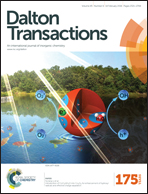Mechanism and stability of spectrally pure green up-conversion emission in Yb3+/Ho3+ co-doped Ba5Gd8Zn4O21 phosphors
Abstract
A series of green-emitting up-conversion (UC) phosphors Ba5Gd8Zn4O21:Yb3+,Ho3+ were prepared by a modified sol–gel method, and X-ray diffraction (XRD) patterns were measured to characterize the crystal structure. The obtained UC samples emit dazzling green light and their spectra are composed of strong green emission peaking at 544 nm and negligible red emission peaking at 666 nm with the excitation of a 980 nm near-infrared (NIR) laser diode, assigned to 5F4/5S2 → 5I8 and 5F5 → 5I8 transitions of Ho3+, respectively. The dependence of UC spectra on dopant contents, temperature and pumping power was employed to analyze UC emission color stability. The possible UC mechanisms and processes were proposed based on dependence of the UC emission intensity on pump power, and the lifetimes of green emission (5F4/5S2 → 5I8) were also investigated to better comprehend the energy transfer (ET) process. The origin of spectrally pure green-emitting was discussed in detail by analyzing UC and down-conversion (DC) spectra in both the visible and NIR region by comparing that of the UC phosphor CaIn2O4:Yb3+/Ho3+ with highly efficient green emission. Results suggest that Ba5Gd8Zn4O21:Yb3+,Ho3+ phosphors with intense green emission and high color purity have potential applications in displays and illuminating technology.


 Please wait while we load your content...
Please wait while we load your content...